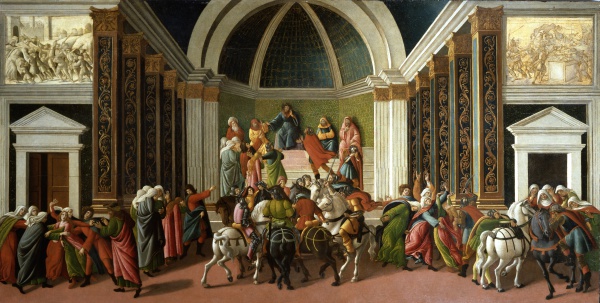Facts About The Story of Virginia
"The Story of Virginia" is a captivating painting by the renowned Italian Renaissance artist, Sandro Botticelli. This tempera on panel artwork measures 86 cm in height and 165 cm in width and is proudly displayed at the Accademia Carrara in Bergamo, Italy. As one of Botticelli's later works, it explores themes of virtue, much like his famous piece "The Story of Lucretia." At its core, the painting examines the themes of violated honor and marital fidelity.
Botticelli employs a technique common in early Renaissance art by depicting multiple scenes within a single image. The narrative unfolds from left to right: it begins with Virginia and other women being attacked by Marcus Claudius, who attempts to force her into submission to Appius Claudius Crassus. Following the assault, Marcus Claudius drags Virginia before a tribunal led by Appius Claudius, who unjustly declares her a slave. Despite her father and husband's desperate pleas for mercy, her father decides to kill her to protect their family's honor and then escapes on horseback.
Set against a backdrop of classical architecture, the painting is teeming with figures in dynamic, emotional poses and vibrant hues. Botticelli masterfully captures the intense drama of violated honor and the harsh consequences driven by patriarchal values in ancient Roman society.

 Vatican
Vatican